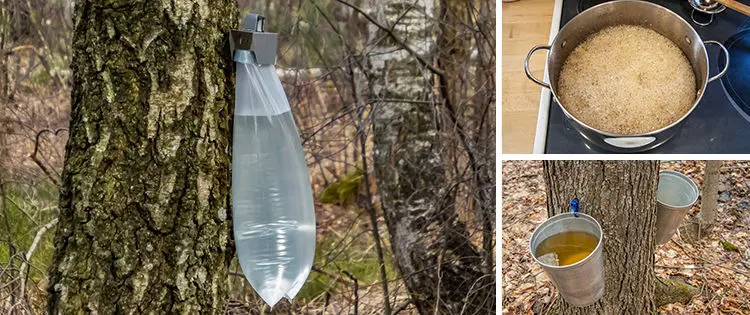The idea of surviving in the wild has always intrigued me. What does it really take to be able to source one’s food and basic needs from the environment around you?
While the realist in me knows that such an extreme situation is unlikely to happen, I am always on the lookout for survival mechanisms, and that is exactly what I thought about when I learnt about tapping trees.
The most celebrated product of tapping trees is maple syrup – but unlike what one would imagine, maples trees do not produce maple syrup. Syrup is extracted from sap, which is sometimes even called tree water.
What is Sap?
Sap flows through the tree trunk and plays the all-important role of distributing food and water to nourish the tree. Minerals and salts absorbed from the soil and water are transported from the roots upwards to the rest of the tree through the sap. Similarly, sugars that are produced by photosynthesis are transported downwards from the leaves towards the roots. The sap travels though the tissue structure in the trunk of the tree, which forms a porous, straw like structure that makes it possible for the sap to flow.
Tapping trees for sap, is essentially a process where we tap into the food distribution network within the tree and get access to some of the sugars and nutrients that the tree creates for its own nutrition. The fundamental principle of tree tapping must be a symbiotic relationship, so that the tree is not over harvested and stays healthy.
Therefore, tapping trees in your own backyard makes for the perfect way to access sap and produce syrup.
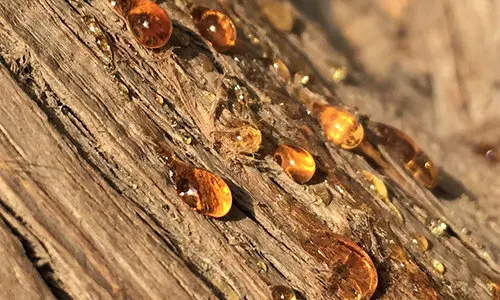
Tree Tapping Basics
In principle, all trees have sap – but trees that are used for tapping are selected based on the quantity, texture, and flavor profile of the sap. Deciduous trees are usually selected for syrups, and tapping is done in the spring when the tree produces fresh leaves after the winter. The ideal condition for tapping is when the daytime temperature is above freezing, and the night-time temperature falls below the freezing point. This is when there is a healthy flow of sap in the tree and adequate harvest can be procured.
Usually, a healthy tree with a trunk that is at least 12 inches in diameter is selected, and a hole is drilled into the trunk.
A spile/tap is then inserted into the hole and the sap that flows out is collected in a bucket. It usually takes a few hours for a bucket to fill, and the process needs to be repeated for a few days for it to be adequate to make syrup.
The sap that flows out of the tree is transparent and flows like water, which is why it is also called tree water. It only has a mildly sweet taste and can be harvested even for drinking like water. Since the sap carries glucose, salts, and minerals, this becomes an electrolyte loaded beverage – making it quite valuable for survival in the wild.
Related: The 10 Best Trees For Homesteaders
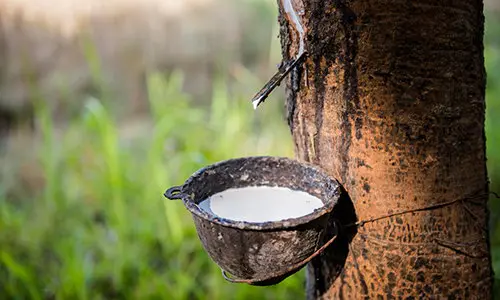
Making Syrup
The sap is then cooked down until it reaches a thicker consistency, this is when the flavor concentrates, and you get a sweet syrup. The general ratio of sap to syrup is 40:1 – for every 40 buckets of sap you get one bucket of syrup.
As the sap thickens, the water content evaporates and the flavor gets concentrated – the flavor will vary not only based on the type of tree, but also based on the growing conditions, time of harvest, health of the tree, soil composition and other similar factors. This is how tree tapping and making syrup becomes an artisan activity.
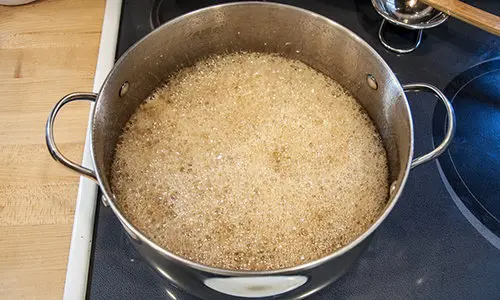
Common Backyard Trees You Can Tap
- Maple – maple trees are most tapped for syrup, because of their flavor profile and high sugar content. Higher sugar content means that the sap will produce a larger quantity of syrup. The sugar maple is most tapped, but other species of maples are also tapped such as the black maple, silver maple, and red maple.
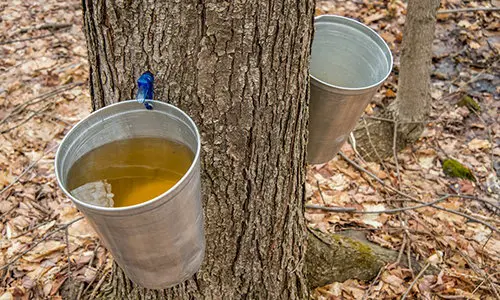
- Walnut – walnut trees produce a flavor profile very similar to maple and can be commonly found in your backyard. While walnut trees provide a wide window of time during which they can be tapped, they quantity of sap available for harvest is lower, which means that it takes a longer time to collect adequate sap to make syrup.
- Birch – birch trees are often tapped for water, as they also have a slightly lower sugar content. To make syrup from birch water, a larger quantity of sap will need to be harvested. Birch trees usually have a smaller window during which they can be tapped. Birch water is often bottled as a beverage and is known to have health benefits.

- Alder – alder trees are related to birch, and have a slightly spicy flavor profile, giving a distinct taste to the syrup.
- Sycamore – sycamore are common landscape trees which means that the odds of finding it in your neighborhood are high. With a distinctive butterscotch flavor, this syrup is a favorite among butterscotch lovers! With a lower sugar content, a larger harvest is required to produce syrup.
- Linden – linden trees have a low sugar content, making the sap very watery. Large quantities would be required to produce syrup; however, the sap could be collected as tree water as well.
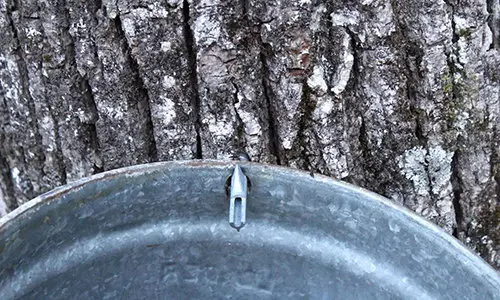
- Palm Trees – tropical palms like the Asian sugar palm have very high sugar content in the sap and can be easily tapped for sap for almost six months of the year. Coconut palms and date palms are often harvested to produce coconut sugar and date sugar, which are very popular in tropical regions.
- Ironwood – ironwood trees are often treated as weeds, for they are prolific and outgrow other trees in the vicinity. They produce sap with sugar content as high as maple, with slight bitter taste and the flavor of tannin.
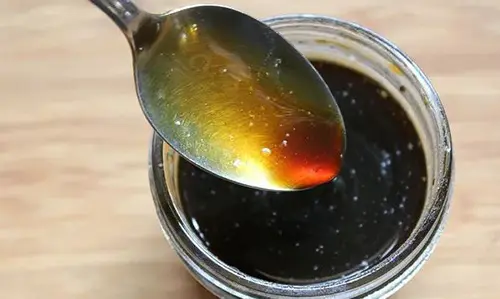
As we learnt earlier, all trees produce sap and there are several more trees that could be tapped.
It is important to know more about the tree that you intend to tap, learn about its ability to heal after it has been tapped, and make sure you give the tree time to recover and grow to maintain a healthy and symbiotic relationship.
Stay away from species that are rare to find or endangered, giving them a chance to flourish and grow.
You may also like:
 10 Home Repairs That You Can Do In 10 Minutes Or Less
10 Home Repairs That You Can Do In 10 Minutes Or Less
What You Should Do Immediately When You Find An Alligator Tree? (Video)
DIY Raised Beds For Your Backyard
Do You Have This Plant In Your Backyard?
How To Save Every Drop Of Water On Your Property

